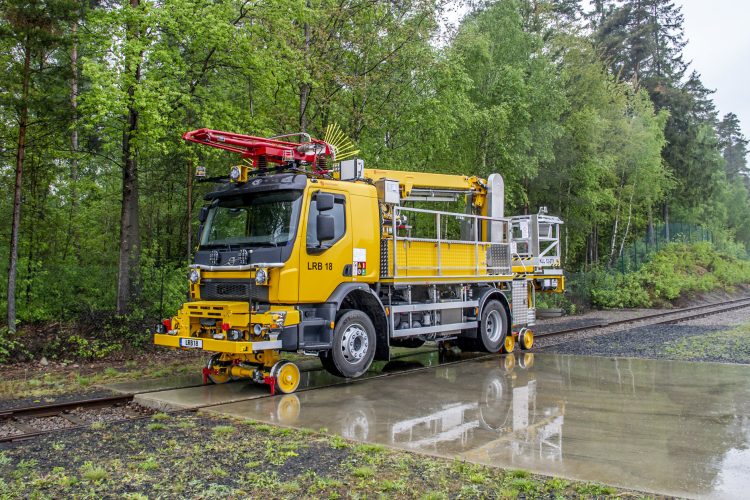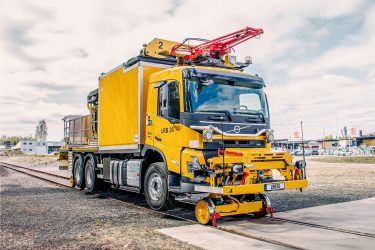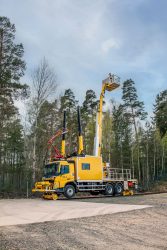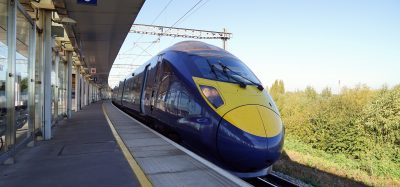Q and A with Goldschmidt’s Peter Stjernfelt – Sales and Marketing Manager, Sweden
Posted: 11 April 2024 | Emily Budgen | No comments yet
Read Goldschmidt’s Sales and Marketing Manager Peter Stjernfelt’s interview about rail-road vehicles and their role in rail infrastructure.


How can Goldschmidt’s road-rail vehicles assist infrastructure managers with their challenges?
Road-rail vehicles play an important role in assisting infrastructure managers by offering a versatile, cost-effective, and efficient solution for rail infrastructure inspection, repair or maintenance. They can quickly reach the part of the railway that needs to be taken care of, and easily move back to the road, which minimises disruptions to rail traffic and translates to significant cost savings.
With our road-rail vehicles, infrastructure managers can rest assured that they have a good quality product from an experienced supplier. Our first road-rail vehicle with hydrostatic drive unit and swivelling bogie was introduced in 1976 and we have since then provided our customers with several hundreds of road-rail vehicles delivered worldwide, and often tailored to the customer’s specific needs and requirements.
What is so unique about the hydrostatic rail drive system of your road-rail vehicles?
Thanks to the hydrostatic rail drive, our road-rail vehicles have all the essential attributes of traditional rail-bound machines, such as efficient braking and good traction capabilities, as well as capability of speeds of up to 60 km/h on track.


You have the option to precisely control the hydrostatically driven vehicle either from within the vehicle cab or in the case of our overhead line inspection vehicles, from the basket. Precision is crucial when maneuvering road-rail vehicles, especially between poles and overhead lines, where safety is of utmost importance. Some vehicles even offer the flexibility of remote operation from outside of the vehicle, through a remote control.
Another advantage of the hydrostatic system is its compatibility with different power sources, making it suitable for both conventional motors and batteries. Moreover, it has the ability to run smoothly on different rail infrastructures, including mainline, light rail, and metro systems with tight curve radii.
What other exciting features are included on the road-rail vehicles?
Our road-rail vehicles are equipped with a range of innovative features designed to enhance both safety and efficiency during operations. One standout feature is the tilt correction (TC) system integrated into our working platforms, ensuring a consistently level basket, even when working in a cant. Additionally, our vehicles have a display within the basket, providing real-time data including the working platform’s position, allowed working area, basket load, and vehicle status. Most of our road-rail vehicles also offer remote access capabilities, allowing owners and service personnel to monitor crucial metrics and vehicle status remotely. Moreover, our vehicles can transfer from road to rail in less than 2 minutes and require only one person to perform this task.
How do you ensure your customers’ road-rail vehicle is maintained to the highest standards?
We have dedicated service technicians at our service base in Osby, who work on-site as well as travel directly to our customers within Sweden with our mobile service workshops. For customers outside of Sweden, we’ve established service partnerships in all our markets. This ensures that regardless of their location, our customers have access to essential services and original spare parts.


Ensuring the safety and optimal performance of each vehicle is extremely important to us. That’s why we also provide customised training sessions for operators and technical staff. These sessions equip them with the necessary skills to operate our vehicles safely and efficiently, as well as prepare them to respond effectively in case of emergencies.
In summary, we provide a comprehensive after-sales service package to keep our vehicles in optimal condition throughout their entire lifecycle.
What feedback have your customers given you so far, and are there any lessons for you to learn?
Our customers often value the exceptional quality of our vehicles and their long lifespan. Many of them also appreciate the fact that we do everything under one roof – from design to finished product – at our facilities in Osby, Sweden. They can visit our premises, see how we work from start to finish, and rest assured we have the right expertise in-house.
One lesson we have learnt is that our customers need fast local support, which we have established over the years. We can also see that our customers need to adhere to a variety of regulations and standards, which can differ from country to country, and we need to be able to provide them with solutions that are compliant with those standards.
What does a modern rail industry look like to your company producing road-rail vehicles, and how do you plan to keep ahead of your competition?
The modern rail industry is characterised by numerous advancements, new technologies and innovations. As road-rail vehicles specialist, we clearly see the increasing need for rail infrastructure maintenance and upgrades, as well as the global efforts to decarbonise rail transport. To meet this global need for more sustainable transport, we offer, for instance, hybrid road-rail vehicles that utilise battery power, and thus reduce CO2 emissions and offer a quieter and healthier working environment for operators.
Staying ahead in this competitive landscape requires a focus on continuous research and development. Alongside development, we prioritize adhering to high-quality standards, increasing customer satisfaction, and further enhancing our aftermarket support.
About the Author


More Like This






